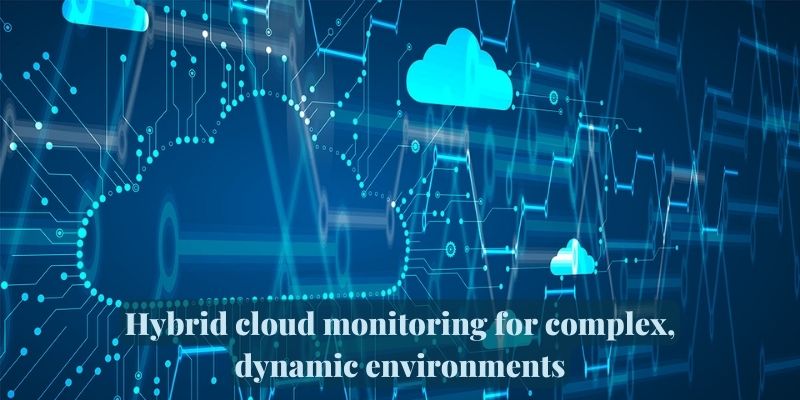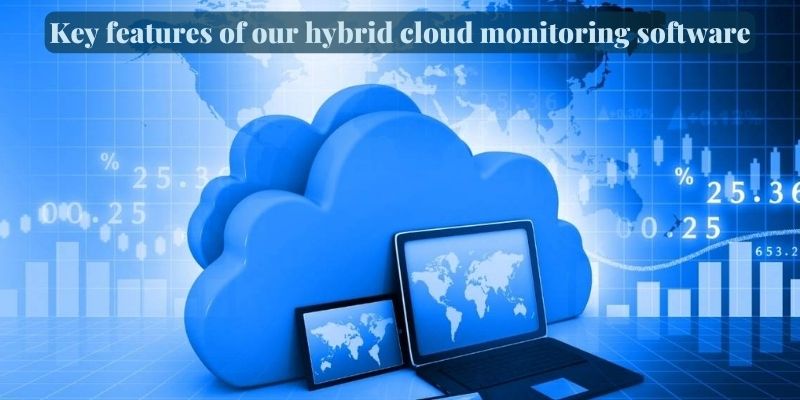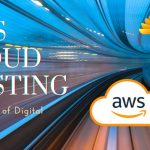Employing a multi-cloud or Hybrid cloud monitoring enables businesses to increase resiliency and keep control of their data and applications. However, because teams must rely on different legacy tools or cloud-provider consoles to acquire access into each environment separately, it can also lead to blind spots. We combine data from on-premises data centers and all significant public and private cloud platforms, including metrics, traces, logs, and information about network performance. Teams can work together smoothly and solve problems more quickly with thorough hybrid cloud monitoring.
Basic monitoring solutions were unable to keep up with the numerous changes being made by different teams in a shared hybrid cloud environment. newtimezz.com now have the ability to quickly identify issues, address them, and fully comprehend their root causes.
The practice of measuring, alerting, and reporting performance indicators for cloud services and resources is known as cloud monitoring. The performance of your hybrid and multi-cloud infrastructure, as well as the apps hosted on it, may be analyzed using the functionality provided by apps Manager. It enables you to immediately identify performance bottlenecks on cloud services before they have an impact on end users.
Contents
Hybrid cloud monitoring for complex, dynamic environments
Organizations frequently discover that their outdated monitoring technologies are unable to keep up with the rate of change in a dynamic cloud environment when they shift workloads to the cloud. By monitoring new cloud instances or containers as soon as they go live, we scale automatically with dynamic infrastructure. Teams can also monitor, correlate, and aggregate data from on-premises data centers alongside all of their cloud installations because we is platform-independent. We monitoring hybrid cloud stacks enables businesses to map out complicated application architectures that span many environments, follow the performance of each platform side-by-side, track specific requests as they travel between on-premises hosts and cloud services, and track the performance of each platform independently.

apps Manager monitors the health, availability, and performance of your cloud apps to provide seamless multi- and hybrid cloud monitoring. To gain unified visibility across all of your IaaS, DBaaS, and SaaS infrastructures, monitor the cloud. Get a comprehensive understanding of your cloud/on-premise application layers by using our cloud monitoring tool to automatically correlate events by mapping interdependencies between applications, services, processes, and cloud components.
Unify disparate environments in a single pane of glass
We offer immediate visibility into hosted services from cloud providers including AWS, Microsoft Azure, Google Cloud Platform, and Alibaba Cloud thanks to hundreds of vendor-backed interfaces. We also effortlessly integrate with private cloud and virtualization technologies including VMware, Microsoft Hyper-V, OpenStack, Cloud Foundry, Pivotal Platform, and Cloud Foundry. Each of these hybrid cloud monitoring integrations comes with an out-of-the-box dashboard that presents important indicators for system health and performance and can be set up in a matter of minutes.

Filter, aggregate, and correlate data from any environment
We maintain a comprehensive collection of tags that may be used to filter, aggregate, and correlate data from any environment on every on-premises host, cloud instance, container, and datapoint. By grouping hosts and containers by data center or cloud provider, or by comparing the performance of applications across environments, organizations can employ tags. By quickly finding and comparing logs and request traces for every environment, service, team, or individual customer, tags also help teams quickly troubleshoot hybrid cloud issues.
We provides a solution to the challenge of monitoring a sizable hybrid cloud platform. It enables our team to examine, modify, and keep an eye on every aspect of our estate from a single location.
Key features of our hybrid cloud monitoring software

Although the market is flooded with cloud monitoring solutions, it’s crucial to find ones that are feature-rich and able to provide system-wide visibility. Applications Manager provides a range of capabilities that represent some of the best practices for having in a cloud monitoring software in order to provide deeper insight into your vital cloud resources:
- Informative dashboards: Obtain access to a dashboard that is easily customisable, where you may set up your cloud services for on-the-go glances. To track particular resources and analytics, you can also design bespoke dashboards.
- Cloud application monitoring: Programs Manager can be used to keep an eye on your mission-critical cloud-deployed programs and the dependencies that go along with them. Use our cloud monitoring tool, which can track every element of your application stack, to broaden your horizons. We offer monitoring help for more than 150 technologies.
- Performance analysis: Utilize Applications Manager to analyze the performance data from your cloud to enhance and maximize the operational effectiveness of your cloud environment.The use of graphs, charts, and tables for data cross-referencing and problem-solving has made cloud performance monitoring simple.
- Microservices tracking: Tracking important cloud microservices to learn about their function and effectiveness in your cloud system.
- Multi-cloud support: Within a single console, Applications Manager provides the capacity to monitor hybrid, private, and public clouds. AWS, Microsoft Azure, OpenStack, Oracle (OCI), Google Cloud Platform (GCP), and other cloud technologies are supported, in addition to cloud software like Microsoft 365.
- Cost & user management: Get a complete cost breakdown of your instances to control cloud charges and forecast growth patterns. You also obtain subscription and licensing information for more information on service usage.
- Agentless monitoring: You can monitor cloud instances with Applications Manager without having to install an outside agent. You can quickly begin tracking your cloud services by simply inputting the required setup information.
- Reliable alerting: Applications Manager can generate alerts when it detects symptoms of performance degradation in your cloud environment. Get notifications via SMS, email, slack messages, and more.
- Forecast Trends: Applications Manager can recognize trends and extrapolate data to provide a future estimate of performance indicators thanks to its advanced machine learning capabilities. Ideal for planning resources, finding anomalies, and comprehending growth pace.
- Inventory Management: You can obtain a comprehensive list of the cloud resources in your cloud environment that are being monitored as soon as the cloud instances are configured within the console.





